China Box Office: ‘Octopus With Broken Arms’ Retains Top Spot, ‘Sonic the Hedgehog 3’ Debuts in Fifth Place


Welcome to Edition 7.26 of the Rocket Report! Let's pause and reflect on how far the rocket business has come in the last 10 years. On this date in 2015, SpaceX made the first attempt to land a Falcon 9 booster on a drone ship positioned in the Atlantic Ocean. Not surprisingly, the rocket crash-landed. In less than a year and a half, though, SpaceX successfully landed reusable Falcon 9 boosters onshore and offshore, and now has done it nearly 400 times. That was remarkable enough, but we're in a new era now. Within a few days, we could see SpaceX catch its second Super Heavy booster and Blue Origin land its first New Glenn rocket on an offshore platform. Extraordinary.
As always, we welcome reader submissions. If you don't want to miss an issue, please subscribe using the box below (the form will not appear on AMP-enabled versions of the site). Each report will include information on small-, medium-, and heavy-lift rockets as well as a quick look ahead at the next three launches on the calendar.

Our annual ranking of the top 10 US launch companies. You can easily guess who made the top of the list: the company that launched Falcon rockets 134 times in 2024 and launched the most powerful and largest rocket ever built on four test flights, each accomplishing more than the last. The combined 138 launches is more than NASA flew the Space Shuttle over three decades. SpaceX will aim to launch even more often in 2025. These missions have far-reaching impacts, supporting Internet coverage for consumers worldwide, launching payloads for NASA and the US military, and testing technology that will take humans back to the Moon and, someday, Mars.

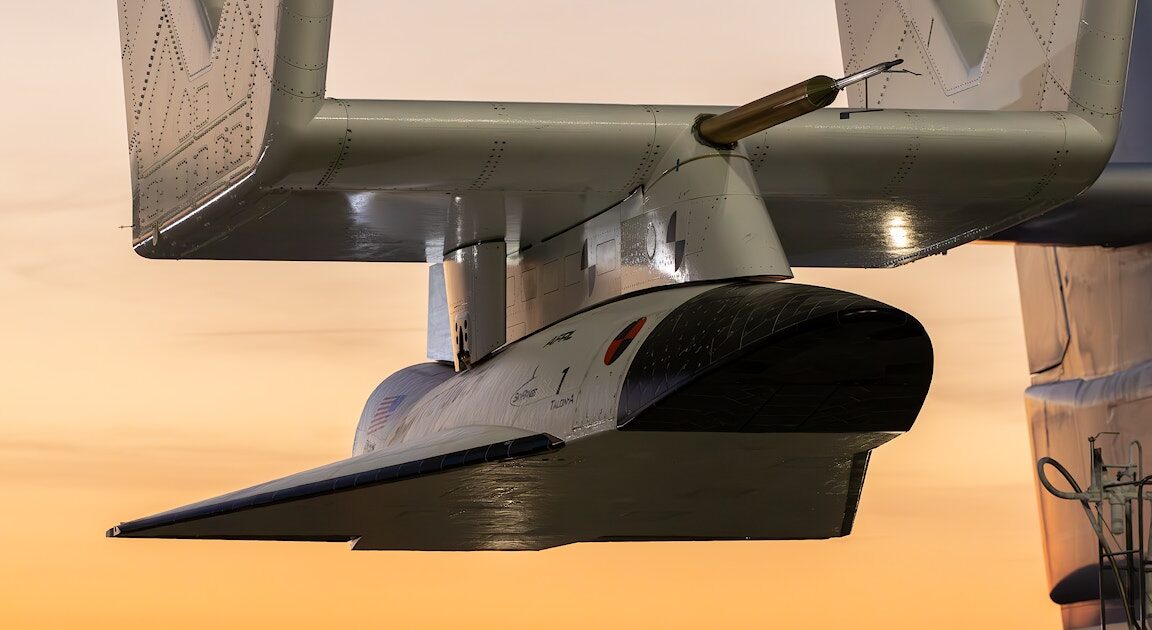
© Stratolaunch
There's a good chance you've seen headlines about HMPV recently, with some touting "what you need to know" about the virus, aka human metapneumovirus. The answer is: not much.
It's a common, usually mild respiratory virus that circulates every year, blending into the throng of other seasonal respiratory illnesses that are often indistinguishable from one another. (The pack includes influenza virus, respiratory syncytial virus (RSV), adenovirus, parainfluenza virus, common human coronaviruses, bocavirus, rhinovirus, enteroviruses, and Mycoplasma pneumoniae, among others.) HMPV is in the same family of viruses as RSV.
As one viral disease epidemiologist at the US Centers for Disease Control summarized in 2016, it's usually "clinically indistinguishable" from other bog-standard respiratory illnesses, like seasonal flu, that cause cough, fever, and nasal congestion. For most, the infection is crummy but not worth a visit to a doctor. As such, testing for it is limited. But, like other common respiratory infections, it can be dangerous for children under age 5, older adults, and those with compromised immune systems. It was first identified in 2001, but it has likely been circulating since at least 1958.


© Getty | Li Hongbo
The first batch of Internet satellites for China's Guowang megaconstellation launched Monday on the country's heavy-lift Long March 5B rocket.
The satellites are the first of up to 13,000 spacecraft a consortium of Chinese companies plans to build and launch over the next decade. The Guowang fleet will beam low-latency high-speed Internet signals in an architecture similar to SpaceX's Starlink network, although Chinese officials haven't laid out any specifics, such as target markets, service specifications, or user terminals.
The Long March 5B rocket took off from Wenchang Space Launch Site on Hainan Island, China's southernmost province, at 5:00 am EST (10:00 UTC) Monday. Ten liquid-fueled engines powered the rocket off the ground with 2.4 million pounds of thrust, steering the Long March 5B on a course south from Wenchang into a polar orbit.


© VCG/VCG via Getty Images
China's new Long March 12 rocket made a successful inaugural flight Saturday, placing two experimental satellites into orbit and testing uprated, higher-thrust engines that will allow a larger Chinese launcher in development to send astronauts to the Moon.
The 203-foot-tall (62-meter) Long March 12 rocket lifted off at 9:25 am EST (14:25 UTC) Saturday from the Wenchang commercial launch site on Hainan Island, China's southernmost province. This was also the first rocket launch from a new commercial spaceport at Wenchang, consisting of two launch sites a short distance from a pair of existing launch pads used by heavier rockets primarily geared for government missions.
The two-stage rocket delivered two technology demonstration satellites into a near-circular 50-degree-inclination orbit with an average altitude of nearly 650 miles (about 1,040 kilometers), according to US military tracking data.
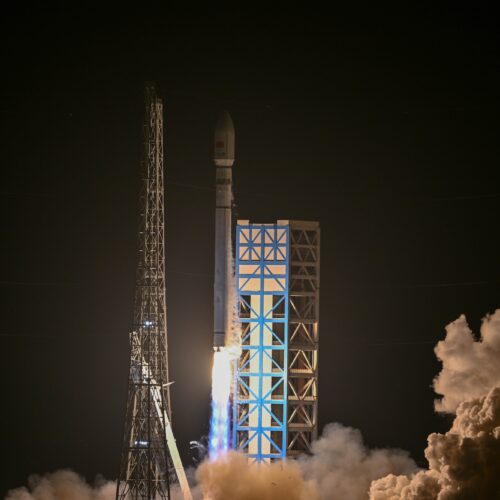
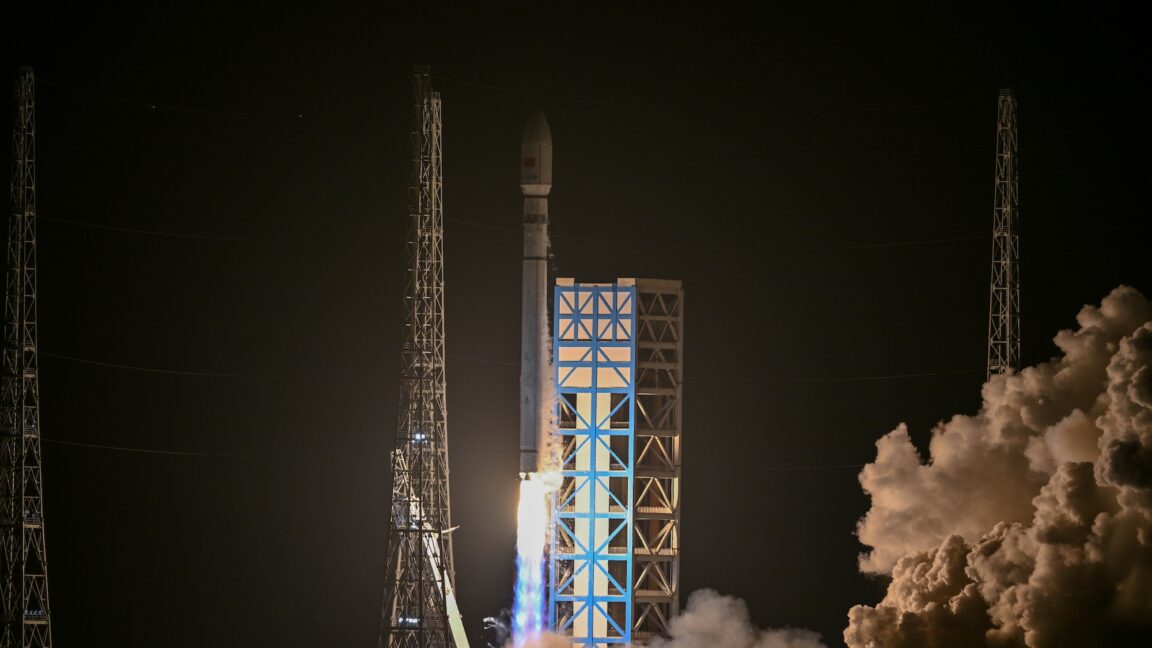
© Luo Yunfei/China News Service/VCG via Getty Images
Welcome to Edition 7.21 of the Rocket Report! We're publishing the Rocket Report a little early this week due to the Thanksgiving holiday in the United States. We don't expect any Thanksgiving rocket launches this year, but still, there's a lot to cover from the last six days. It seems like we've seen the last flight of the year by SpaceX's Starship rocket. A NASA filing with the Federal Aviation Administration requests approval to fly an aircraft near the reentry corridor over the Indian Ocean for the next Starship test flight. The application suggests the target launch date is January 11, 2025.
As always, we welcome reader submissions. If you don't want to miss an issue, please subscribe using the box below (the form will not appear on AMP-enabled versions of the site). Each report will include information on small-, medium-, and heavy-lift rockets as well as a quick look ahead at the next three launches on the calendar.

Another grim first in Ukraine. For the first time in warfare, Russia launched an Intermediate Range Ballistic Missile against a target in Ukraine, Ars reports. This attack on November 21 followed an announcement from Russian President Vladimir Putin earlier the same week that the country would change its policy for employing nuclear weapons in conflict. The IRBM, named Oreshnik, is the longest-range weapon ever used in combat in Europe and could be refitted to carry nuclear warheads on future strikes.
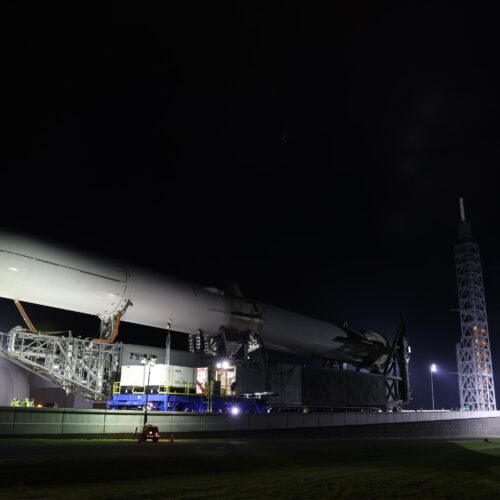
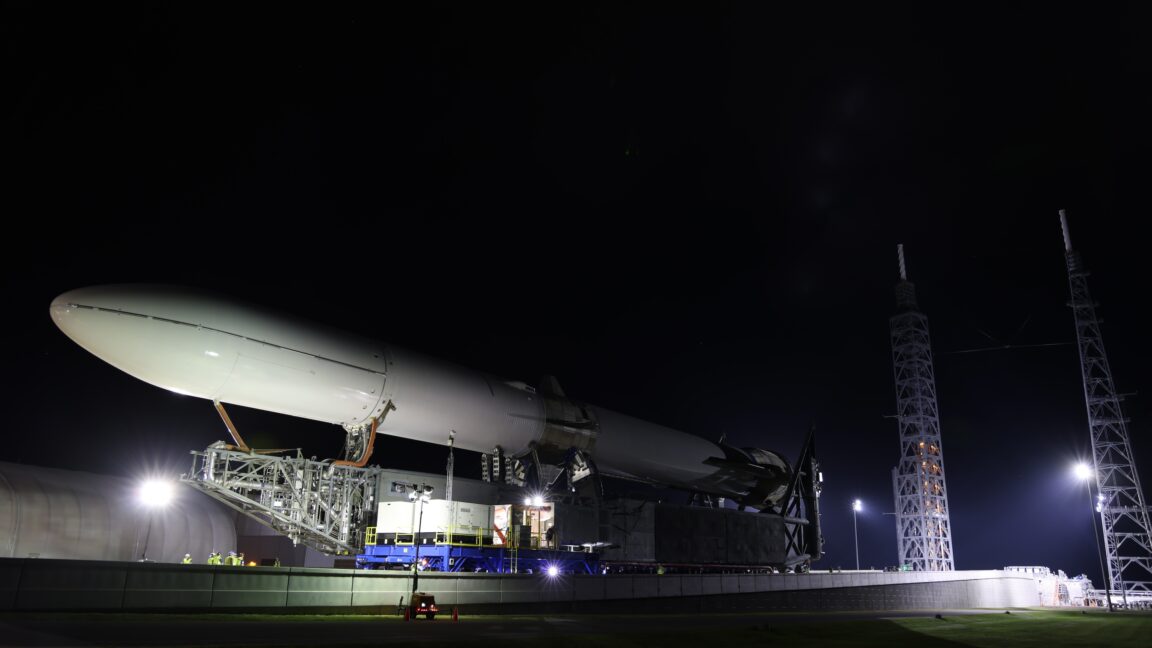
© Blue Origin
Welcome to Edition 7.19 of the Rocket Report! Okay, we get it. We received more submissions from our readers on Australia's approval of a launch permit for Gilmour Space than we've received on any other news story in recent memory. Thank you for your submissions as global rocket activity continues apace. We'll cover Gilmour in more detail as they get closer to launch. There will be no Rocket Report next week as Eric and I join the rest of the Ars team for our 2024 Technicon in New York.
As always, we welcome reader submissions. If you don't want to miss an issue, please subscribe using the box below (the form will not appear on AMP-enabled versions of the site). Each report will include information on small-, medium-, and heavy-lift rockets as well as a quick look ahead at the next three launches on the calendar.

Gilmour Space has a permit to fly. Gilmour Space Technologies has been granted a permit to launch its 82-foot-tall (25-meter) orbital rocket from a spaceport in Queensland, Australia. The space company, founded in 2012, had initially planned to lift off in March but was unable to do so without approval from the Australian Space Agency, the Australian Broadcasting Corporation reports. The government approved Gilmour's launch permit Monday, although the company is still weeks away from flying its three-stage Eris rocket.
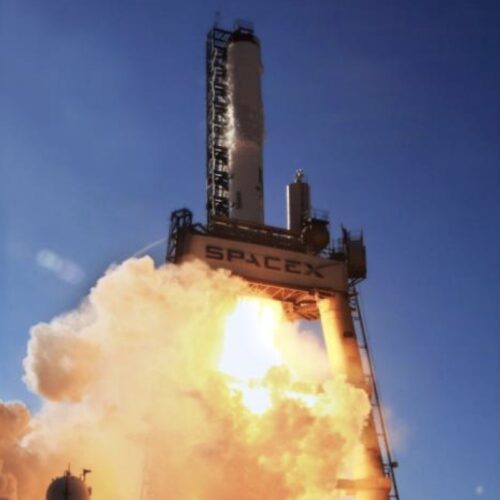
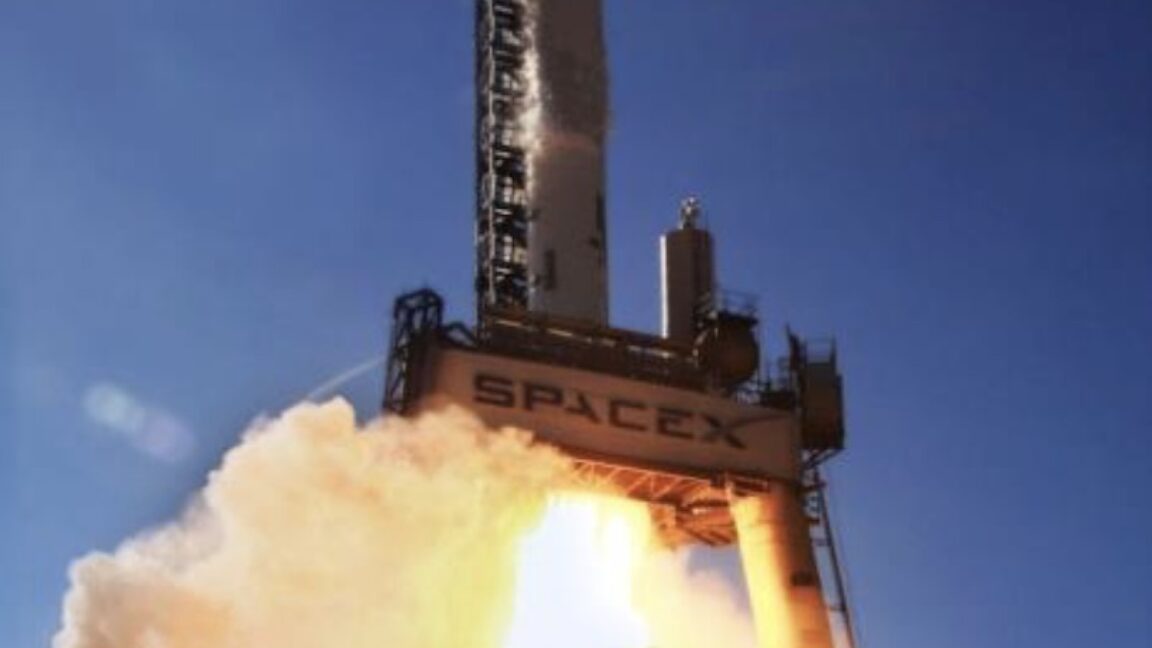
© SpaceX
When Chinese space officials unveiled the design for the country's first super heavy lift rocket nearly a decade ago, it looked like a fairly conventional booster. The rocket was fully expendable, with three stages and solid motors strapped onto its sides.
Since then, the Asian country has been revising the design of this rocket, named Long March 9, in response to the development of reusable rockets by SpaceX. As of two years ago, China had recalibrated the design to have a reusable first stage.
Now, based on information released at a major airshow in Zhuhai, China, the design has morphed again. And this time, the plan for the Long March 9 rocket looks almost exactly like a clone of SpaceX's Starship rocket.
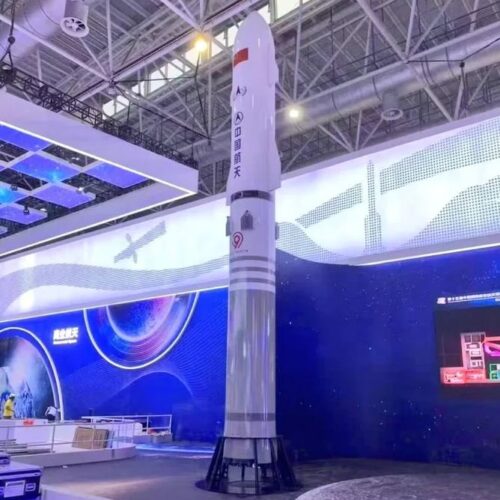
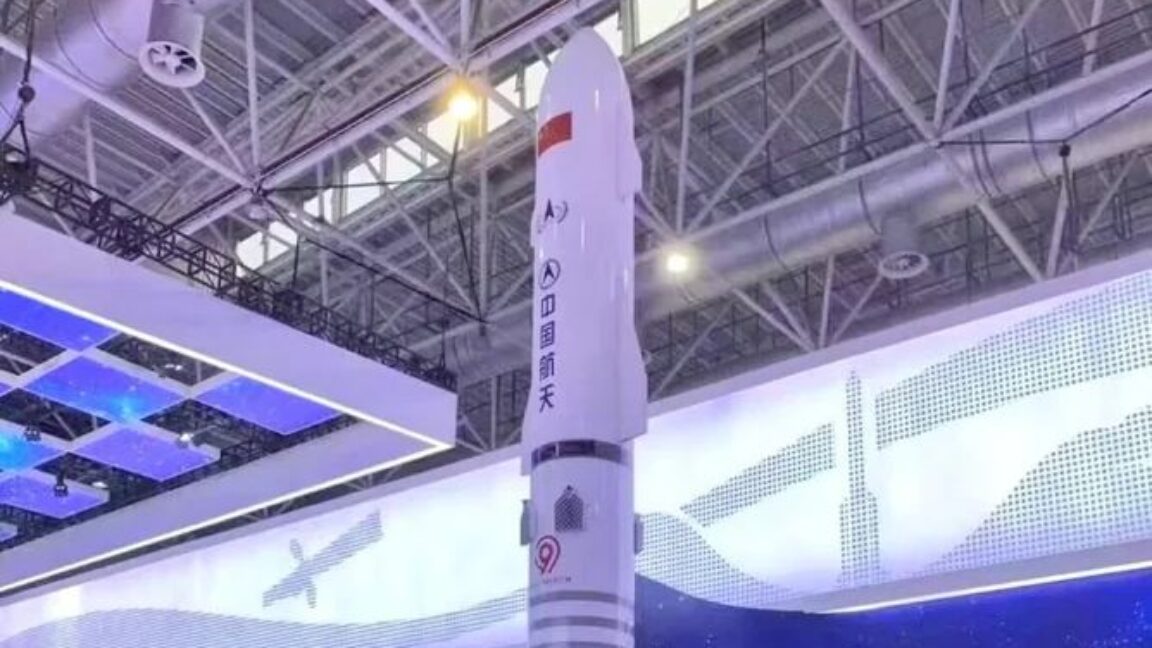
Welcome to Edition 7.17 of the Rocket Report! Next week marks 10 years since one of the more spectacular launch failures of this century. On October 28, 2014, an Antares rocket, then operated by Orbital Sciences, suffered an engine failure six seconds after liftoff from Virginia and crashed back onto the pad in a fiery twilight explosion. I was there and won't forget seeing the rocket falter just above the pad, being shaken by the deafening blast, and then running for cover. The Antares rocket is often an afterthought in the space industry, but it has an interesting backstory touching on international geopolitics, space history, and novel engineering. Now, Northrop Grumman and Firefly Aerospace are developing a new version of Antares.
As always, we welcome reader submissions. If you don't want to miss an issue, please subscribe using the box below (the form will not appear on AMP-enabled versions of the site). Each report will include information on small-, medium-, and heavy-lift rockets as well as a quick look ahead at the next three launches on the calendar.

Astra gets a lifeline from DOD. Astra, the launch startup that was taken private again earlier this year for a sliver of its former value, has landed a new contract with the Defense Innovation Unit (DIU) to support the development of a next-gen launch system for time-sensitive space missions, TechCrunch reports. The contract, which the DIU awarded under its Novel Responsive Space Delivery (NRSD) program, has a maximum value of $44 million. The money will go toward the continued development of Astra’s Launch System 2, designed to perform rapid, ultra-low-cost launches.
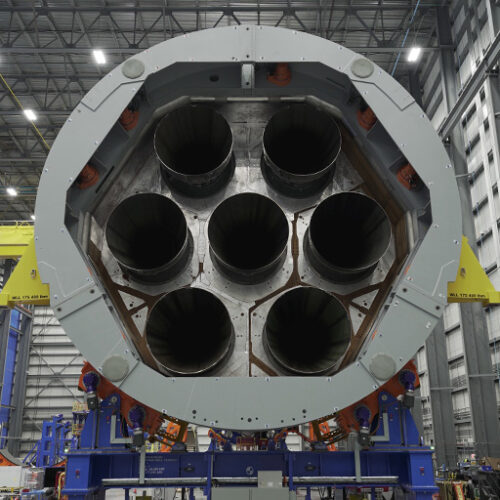
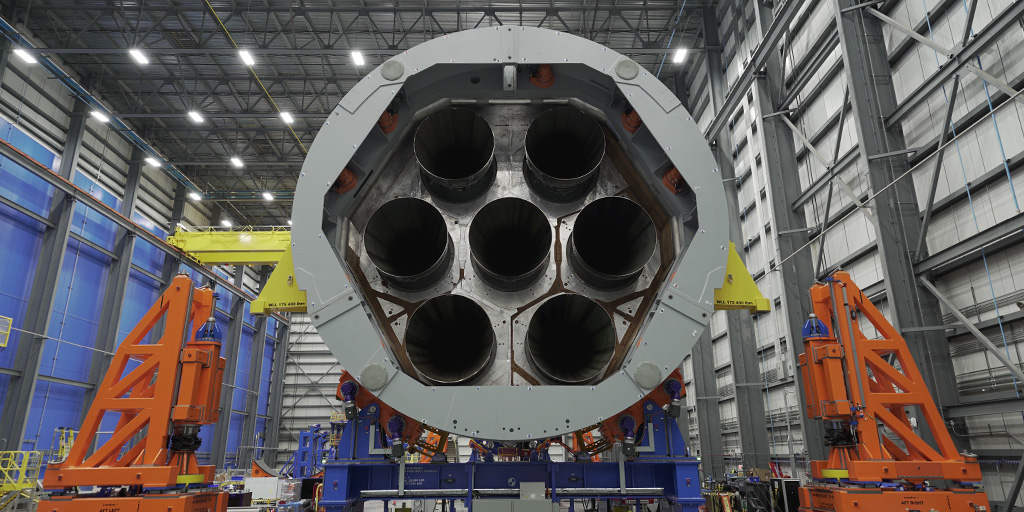
© Blue Origin
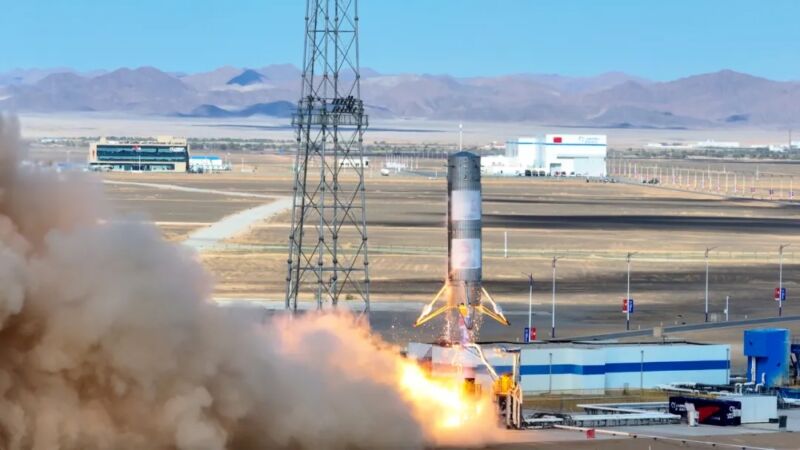
Enlarge / Landspace's reusable rocket test vehicle lifts off from the Jiuquan Satellite Launch Center on Wednesday, September 11, 2024. (credit: Landspace)
Welcome to Edition 7.11 of the Rocket Report! Outside of companies owned by American billionaires, the most imminent advancements in reusable rockets are coming from China's quasi-commercial launch industry. This industry is no longer nascent. After initially relying on solid-fueled rocket motors apparently derived from Chinese military missiles, China's privately funded launch firms are testing larger launchers, with varying degrees of success, and now performing hop tests reminiscent of SpaceX's Grasshopper and F9R Dev1 programs more than a decade ago.
As always, we welcome reader submissions. If you don't want to miss an issue, please subscribe using the box below (the form will not appear on AMP-enabled versions of the site). Each report will include information on small-, medium-, and heavy-lift rockets as well as a quick look ahead at the next three launches on the calendar.

Landspace hops closer to a reusable rocket. Chinese private space startup Landspace has completed a 10-kilometer (33,000-foot) vertical takeoff and vertical landing test on its Zhuque-3 (ZQ-3) reusable rocket testbed, including a mid-flight engine reignition at near supersonic conditions, Aviation Week & Space Technology reports. The 18.3-meter (60-foot) vehicle took off from the Jiuquan launch base in northwestern China, ascended to 10,002 meters, and then made a vertical descent and achieved an on-target propulsive landing 3.2 kilometers (2 miles) from the launch pad. Notably, the rocket's methane-fueled variable-thrust engine intentionally shutdown in flight, then reignited for descent, as engines would operate on future full-scale booster flybacks. The test booster used grid fins and cold gas thrusters to control itself when its main engine was dormant, according to Landspace.

Enlarge (credit: eugenekeebler via Getty Images)
In an age when you can get just about anything online, it's probably no surprise that you can buy a diamond-making machine for $200,000 on Chinese eCommerce site Alibaba. If, like me, you haven't been paying attention to the diamond industry, it turns out that the availability of these machines reflects an ongoing trend toward democratizing diamond production—a process that began decades ago and continues to evolve.
The history of lab-grown diamonds dates back at least half a century. According to Harvard graduate student Javid Lakha, writing in a comprehensive piece on lab-grown diamonds published in Works in Progress last month, the first successful synthesis of diamonds in a laboratory setting occurred in the 1950s. Lakha recounts how Howard Tracy Hall, a chemist at General Electric, created the first lab-grown diamonds using a high-pressure, high-temperature (HPHT) process that mimicked the conditions under which diamonds form in nature.
Since then, diamond-making technology has advanced significantly. Today, there are two primary methods for creating lab-grown diamonds: the HPHT process and chemical vapor deposition (CVD). Both types of machines are now listed on Alibaba, with prices starting at around $200,000, as pointed out in a Hacker News comment by engineer John Nagle (who goes by "Animats" on Hacker News). A CVD machine we found is more pricey, at around $450,000.
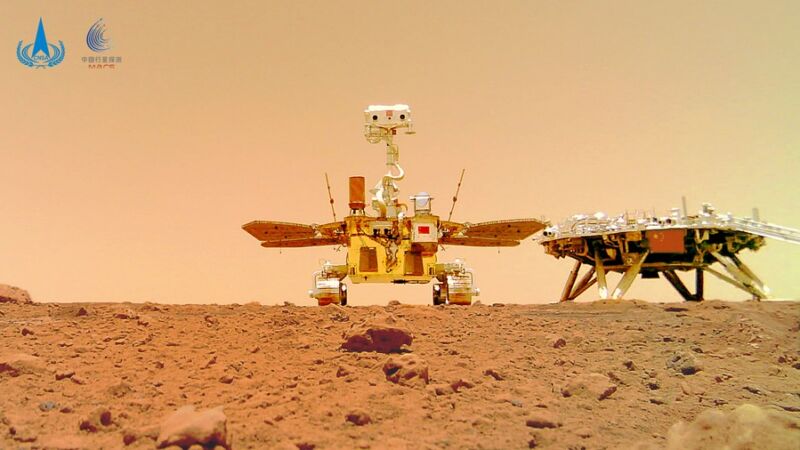
Enlarge / A "selfie" photo of China's Zhurong rover and the Tianwen-1 landing platform on Mars in 2021. (credit: China National Space Administration)
China plans to launch two heavy-lift Long March 5 rockets with elements of the Tianwen-3 Mars sample return mission in 2028, the mission's chief designer said Thursday.
In a presentation at a Chinese space exploration conference, the chief designer of China's robotic Mars sample return project described the mission's high-level design and outlined how the mission will collect samples from the Martian surface. Reports from the talk published on Chinese social media and by state-run news agencies were short on technical details and did not discuss any of the preparations for the mission.
Public pronouncements by Chinese officials on future space missions typically come true, but China is embarking on challenging efforts to explore the Moon and Mars. China aims to land astronauts on the lunar surface by 2030 in a step toward eventually building a Moon base called the International Lunar Research Station.

Enlarge / Gen. Stephen Whiting, commander of US Space Command, speaks earlier this year at Peterson Space Force Base, Colorado. (credit: USSPACECOM photo by John Philip Wagner Jr.)
The head of US Space Command said Wednesday he would like to see more transparency from the Chinese government on space debris, especially as one of China's newer rockets has shown a propensity for breaking apart and littering low-Earth orbit with hundreds of pieces of space junk.
Gen. Stephen Whiting, commander of US Space Command, said he has observed some improvement in the dialogue between US and Chinese military officials this year. But the disintegration of the upper stage from a Long March 6A rocket earlier this month showed China could do more to prevent the creation of space debris and communicate openly about it when it happens.
The Chinese government acknowledged the breakup of the Long March 6A rocket's upper stage in a statement by its Ministry of Foreign Affairs on August 14, more than a week after the rocket's launch August 6 with the first batch of 18 Internet satellites for a megaconstellation of thousands of spacecraft analogous to SpaceX's Starlink network.
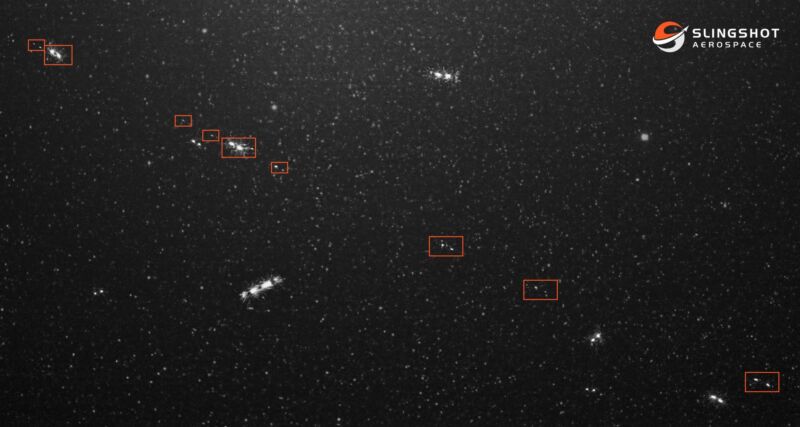
Enlarge / Debris from the upper stage of China's Long March 6A rocket captured from the ground by Slingshot Aerospace. (credit: Slingshot Aerospace)
The upper stage from a Chinese rocket that launched a batch of Internet satellites Tuesday has broken apart in space, creating a debris field of at least 700 objects in one of the most heavily-trafficked zones in low-Earth orbit.
US Space Command, which tracks objects in orbit with a network of radars and optical sensors, confirmed the rocket breakup Thursday. Space Command initially said the event created more than 300 pieces of trackable debris. The military's ground-based radars are capable of tracking objects larger than 10 centimeters (4 inches).
Later Thursday, LeoLabs, a commercial space situational awareness company, said its radars detected at least 700 objects attributed to the Chinese rocket. The number of debris fragments could rise to more than 900, LeoLabs said.

Enlarge / A Long March 6A rocket launches the first 18 Internet satellites for China's Qianfan, or Thousand Sails, broadband network. (credit: VCG via Getty Images)
Chinese officials have long signaled their interest in deploying a satellite network, or maybe several, to beam broadband Internet signals across China and other nations within its sphere of influence.
Two serious efforts are underway in China to develop a rival to SpaceX's Starlink network, which the Chinese government has banned in its territory. The first batch of 18 satellites for one of those Chinese networks launched into low-Earth orbit Tuesday.
A Long March 6A rocket delivered the 18 spacecraft into a polar orbit following liftoff at 2:42 am EDT (06:42 UTC) from the Taiyuan launch base in northern China's Shanxi province. The Long March 6A is one of China's newest rockets—and the country's first to employ strap-on solid rocket boosters—with the ability to deploy a payload of up to 4.5 metric tons (9,900 pounds) into a 700-kilometer (435-mile) Sun-synchronous orbit.
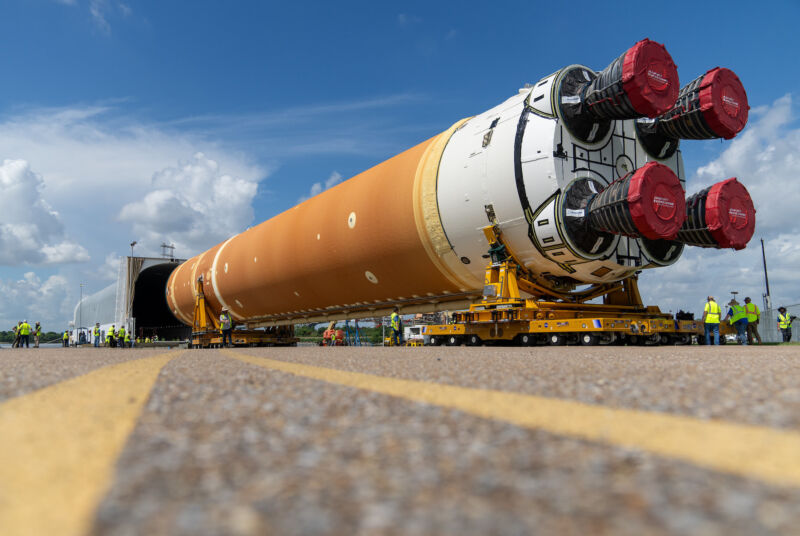
Enlarge / The core stage for NASA's second Space Launch System rocket rolls aboard a barge that will take it from New Orleans to Kennedy Space Center in Florida. (credit: NASA)
Welcome to Edition 7.03 of the Rocket Report! One week ago, SpaceX suffered a rare failure of its workhorse Falcon 9 rocket. In fact, it was the first time the latest version of the Falcon 9, known as the Block 5, has ever failed on its prime mission after nearly 300 launches. The world's launch pads have been silent since the grounding of the Falcon 9 fleet after last week's failure. This isn't surprising, but it's noteworthy. After all, the Falcon 9 has flown more this year than all of the world's other rockets combined and is fundamental to much of what the world does in space.
As always, we welcome reader submissions. If you don't want to miss an issue, please subscribe using the box below (the form will not appear on AMP-enabled versions of the site). Each report will include information on small-, medium-, and heavy-lift rockets as well as a quick look ahead at the next three launches on the calendar.

Astra finally goes private, again. A long-simmering deal for Astra's founders to take the company private has been finalized, the company announced Thursday, capping the rocket launch company’s descent from blank-check darling to delisting in three years, Bloomberg reports. The launch company's valuation peaked at $3.9 billion in 2021, the year it went public, and was worth about $12.2 million at the end of March, according to data compiled by Bloomberg. Astra's chief executive officer, Chris Kemp, and chief technology officer, Adam London, founded the company in 2016 with the goal of essentially commoditizing launch services for small satellites. But Astra's rockets failed to deliver and fell short of orbit five times in seven tries.
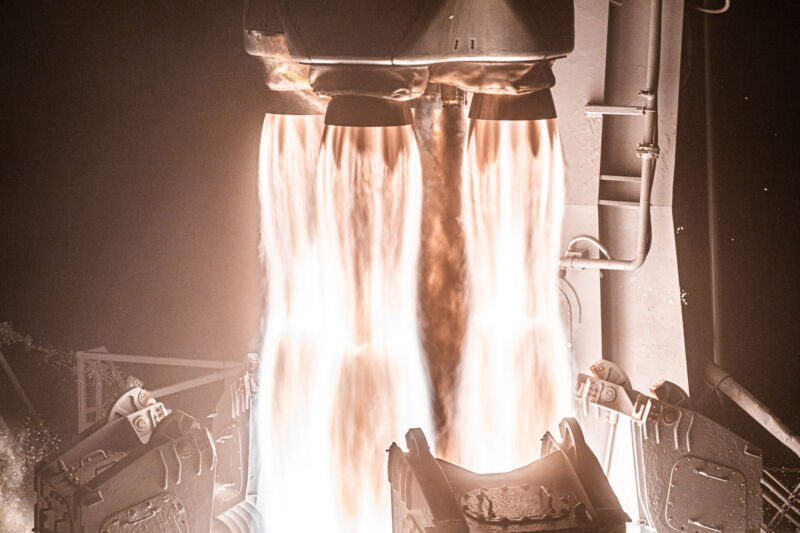
Enlarge / Four kerosene-fueled Reaver engines power Firefly's Alpha rocket off the pad at Vandenberg Space Force Base, California. (credit: Firefly Aerospace)
Welcome to Edition 7.01 of the Rocket Report! We're compiling this week's report a day later than usual due to the Independence Day holiday. Ars is beginning its seventh year publishing this weekly roundup of rocket news, and there's a lot of it this week despite the holiday here in the United States. Worldwide, there were 122 launches that flew into Earth orbit or beyond in the first half of 2024, up from 91 in the same period last year.
As always, we welcome reader submissions, and if you don't want to miss an issue, please subscribe using the box below (the form will not appear on AMP-enabled versions of the site). Each report will include information on small-, medium-, and heavy-lift rockets as well as a quick look ahead at the next three launches on the calendar.

Firefly launches its fifth Alpha flight. Firefly Aerospace placed eight CubeSats into orbit on a mission funded by NASA on the first flight of the company’s Alpha rocket since an upper stage malfunction more than half a year ago, Space News reports. The two-stage Alpha rocket lifted off from Vandenberg Space Force Base in California late Wednesday, two days after an issue with ground equipment aborted liftoff just before engine ignition. The eight CubeSats come from NASA centers and universities for a range of educational, research, and technology demonstration missions. This was the fifth flight of Firefly's Alpha rocket, capable of placing about a metric ton of payload into low-Earth orbit.

Enlarge / SpaceX's 10th Falcon Heavy rocket climbs into orbit with a new US government weather satellite. (credit: SpaceX)
Welcome to Edition 6.50 of the Rocket Report! SpaceX launched its 10th Falcon Heavy rocket this week with the GOES-U weather satellite for NOAA, and this one was a beauty. The late afternoon timing of the launch and atmospheric conditions made for great photography. Falcon Heavy has become a trusted rocket for the US government, and its next flight in October will deploy NASA's Europa Clipper spacecraft on the way to explore one of Jupiter's enigmatic icy moons.
As always, we welcome reader submissions, and if you don't want to miss an issue, please subscribe using the box below (the form will not appear on AMP-enabled versions of the site). Each report will include information on small-, medium-, and heavy-lift rockets as well as a quick look ahead at the next three launches on the calendar.

Sir Peter Beck dishes on launch business. Ars spoke with the recently knighted Peter Beck, founder and CEO of Rocket Lab, on where his scrappy company fits in a global launch marketplace dominated by SpaceX. Rocket Lab racked up the third-most number of orbital launches by any US launch company (it's headquartered in California but primarily assembles and launches rockets in New Zealand). SpaceX's rideshare launch business with the Falcon 9 rocket is putting immense pressure on small launch companies like Rocket Lab. However, Beck argues his Electron rocket is a bespoke solution for customers desiring to put their satellite in a specific place at a specific time, a luxury they can't count on with a SpaceX rideshare.
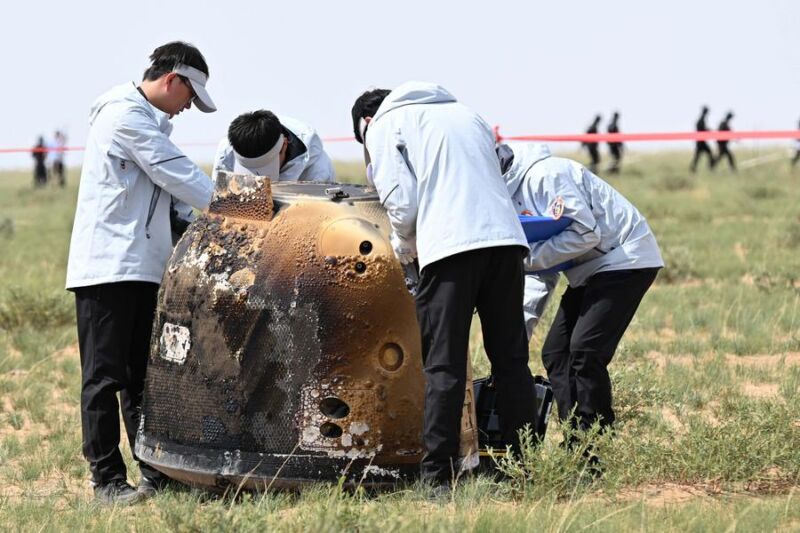
Enlarge / This photo taken on June 25, 2024, shows the retrieval site of the return capsule of the Chang'e-6 probe in Siziwang Banner, north China's Inner Mongolia Autonomous Region. (credit: Xinhua/Lian Zhen)
A small spacecraft landed in Inner Mongolia on Tuesday, bringing samples from the far side of the Moon back to Earth.
This was not China's first robotic mission to return a few pounds of dust and pebbles from the lunar surface—that came with the Chang'e 5 mission in December 2020. However, this was the first time any space program in the world returned material from the Moon's far side.
The successful conclusion of this mission, which launched from Earth nearly two months ago, marked another significant achievement for China's space program as the country sets its sights on landing humans on the Moon by the year 2030.